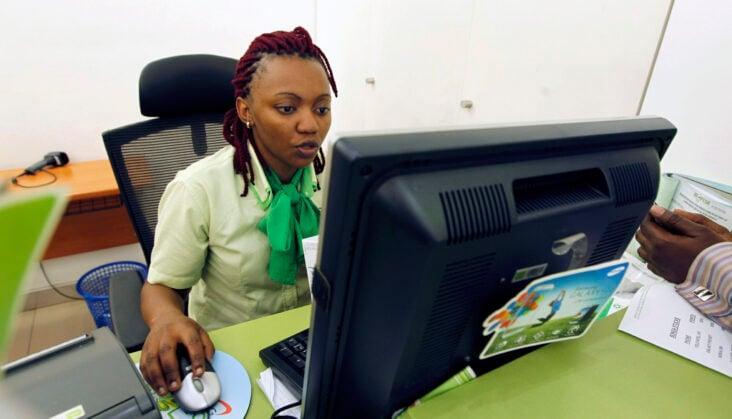By Sharmi Surianarain
Africa-Press – Lesotho. The African continent must solve this problem at the root and at scale. If we act with intention and coordination, Africa’s youth population, particularly its women, can also represent a demographic dividend, a solution to global workforce challenges and a strategic asset for the continent.
The personal and social costs of unemployment are not gender-neutral. Women already experience disproportionately worse human development outcomes than men: they earn less and have fewer opportunities to progress or less access to information or inputs to improve their outcomes.
In the search for work, barriers for young women are higher and harder to overcome at every step. Young women have less time, more caring responsibilities, less money for printing, mobile data and transport, and less time to volunteer and network.
And they face a risk of harassment if they do get the job interview. Covid has further exposed the gender dimension of the unemployment challenge on the African continent. In the early months of the pandemic, two-thirds of all job losses in South Africa were women.
Women were triply-disadvantaged during the pandemic—they worked in sectors that were the hardest hit but were also the least protected, and they carried significant additional burdens, including greater caregiving responsibilities.
The gendered unemployment crisis is a systems problem. Addressing it will require targeted interventions and coordinated partnerships. We cannot improve the employment outlook for our youth without looking critically at the pathways into employment.
In South Africa, for instance, men are 1.5 times more likely than young women to have a matric (National Senior Certificate) or high school degree, providing them with a significant labour market advantage.
Less-educated women generally earn less and may be pushed out of employment altogether. Higher economic participation by women leads to higher spending on schooling for children, with important implications for growth in the long run.
But economic opportunities are shifting. Paths to employment are increasingly no longer linear, even for those with a quality education. Investment in male-dominated sectors could dismantle gender stereotypes, designing job placements programmes with young women at the centre, and actively working to remove barriers that inhibit women from accessing specific jobs.
Promising innovations that address these barriers need to be adopted at scale—allowing for shifts in the deep underlying systems that lock women out of employment.
Investment in pathways to employment for young women has a positive ripple effect on society. The evidence is clear about the benefits of women’s economic and social participation: greater gender equality leads to better development outcomes.
It contributes to reducing income inequality and boosting economic diversification and, in turn, supports economic resilience. Higher economic participation by women leads to higher spending on schooling for children, with important implications for growth in the long run.
Conversely, the consequences of ignoring the gender dimension are severe—an estimate by McKinsey & Company suggests that ignoring gender in economic recovery plans could cost global GDP growth $1 trillion by 2030.
To equip women with economic choices, we need to forge pathways for them into traditionally male industries and transform perceptions that certain jobs are reserved for women (or men).
This means focusing employment interventions on growth sectors that already employ large numbers of women and dismantling the barriers that lock women out of other well-paid, secure sectors of the economy.
As young women enter these professions, we need to understand the further gaps they face—in everything from pay to equipment and facilities designed for men—and support women’s self-advocacy in closing these gaps.
One example is Harambee’s partnership with CallForce and Vumatel in Soweto, creating township-based work-from-home opportunities for women in global business services.
Nothando Vilakazi is a single mother in her mid-20s, who is now able to work from her home in Soweto as a call centre agent and, as a result, better support her daughter, mother and disabled cousin.
The global business services industry benefits from a sector-level plan that is coordinated intentionally to create inclusive jobs like these. We’ve seen that this approach can yield dividends in other sectors—for example, fewer than 5% of plumbers in South Africa are women.
Now, with a coordinated sector effort, the industry is establishing new qualification pathways and lowering barriers to entry for young women. More than 50% of enrollees in these new skilling programmes are women, and employers report that they perform as well as or better than their male peers.
As young women enter these professions, we need to understand the further gaps they face—in everything from pay to equipment and facilities designed for men—and support women’s self-advocacy in closing these gaps.
We cannot increase gender inclusion by working in isolated pockets. Given the layered and intersecting challenges that young women face, partnerships are central to systemic change.
Each of the actors in this space—government, employers and industry bodies, civil society actors, and importantly, young women themselves—has a distinct role to play.
To coordinate efforts, they will need a shared understanding of the challenges. Founded on a principle of inclusion in employment, Harambee’s network is already over 63% female and thus a rich source of data and insight into gendered barriers.
In partnership with Co-Impact, collaborative philanthropy, we are now addressing gender with a broader scope and sharper intention. We have deepened our understanding of barriers to work-seeking such as childcare and transport, both of which disproportionately impact women.
We are engaging in partnerships with government and employer intermediary organisations to design sector master plans that incentivise inclusive hiring—especially of young women and people with disabilities.
As part of our partnership with the Presidential Youth Employment Intervention, Harambee supports the convening and coordination of actors in priority growth sectors, including the establishment of a jobs accelerator for the care and social economy.
This will focus on unlocking jobs within the early childhood, health, and education sectors—valuable both for the earning potential they represent and the infrastructure they create that enables women to remain in the labour force.
We can mark International Women’s Day by celebrating women’s achievements and the pioneers of women’s access to opportunity. However, we must remain alert to the precarity of these gains in the face of an ongoing unemployment crisis and economic forces that are fundamentally gendered in their impact.
We must recommit to the programmes and policies proven to accelerate women’s economic equality. Without action, we run the risk of wiping out years of efforts to level the economic playing field for women.
https://www.theafricareport.com/182192/africa-in-the-search-for-work-barriers-for-young-women-are-higher-harder-to-overcome/
For More News And Analysis About Lesotho Follow Africa-Press






